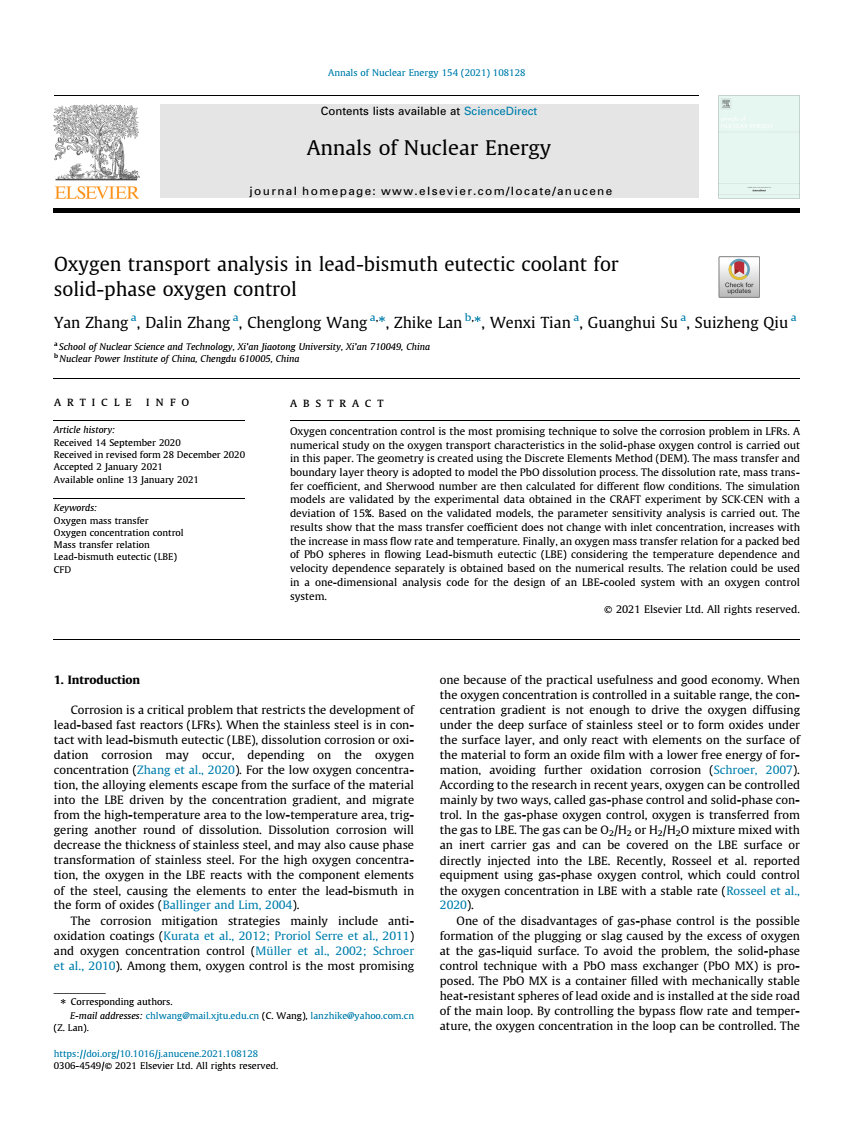Oxygen concentration control is the most promising technique to solve the corrosion problem in LFRs. A numerical study on the oxygen transport characteristics in the solid-phase oxygen control is carried out in this paper. The geometry is created using the Discrete Elements Method (DEM). The mass transfer and boundary layer theory is adopted to model the PbO dissolution process. The dissolution rate, mass transfer coefficient, and Sherwood number are then calculated for different flow conditions. The simulation models are validated by the experimental data obtained in the CRAFT experiment by SCK center dot CEN with a deviation of 15%. Based on the validated models, the parameter sensitivity analysis is carried out. The results show that the mass transfer coefficient does not change with inlet concentration, increases with the increase in mass flow rate and temperature. Finally, an oxygen mass transfer relation for a packed bed of PbO spheres in flowing Lead-bismuth eutectic (LBE) considering the temperature dependence and velocity dependence separately is obtained based on the numerical results. The relation could be used in a one-dimensional analysis code for the design of an LBE-cooled system with an oxygen control system.
